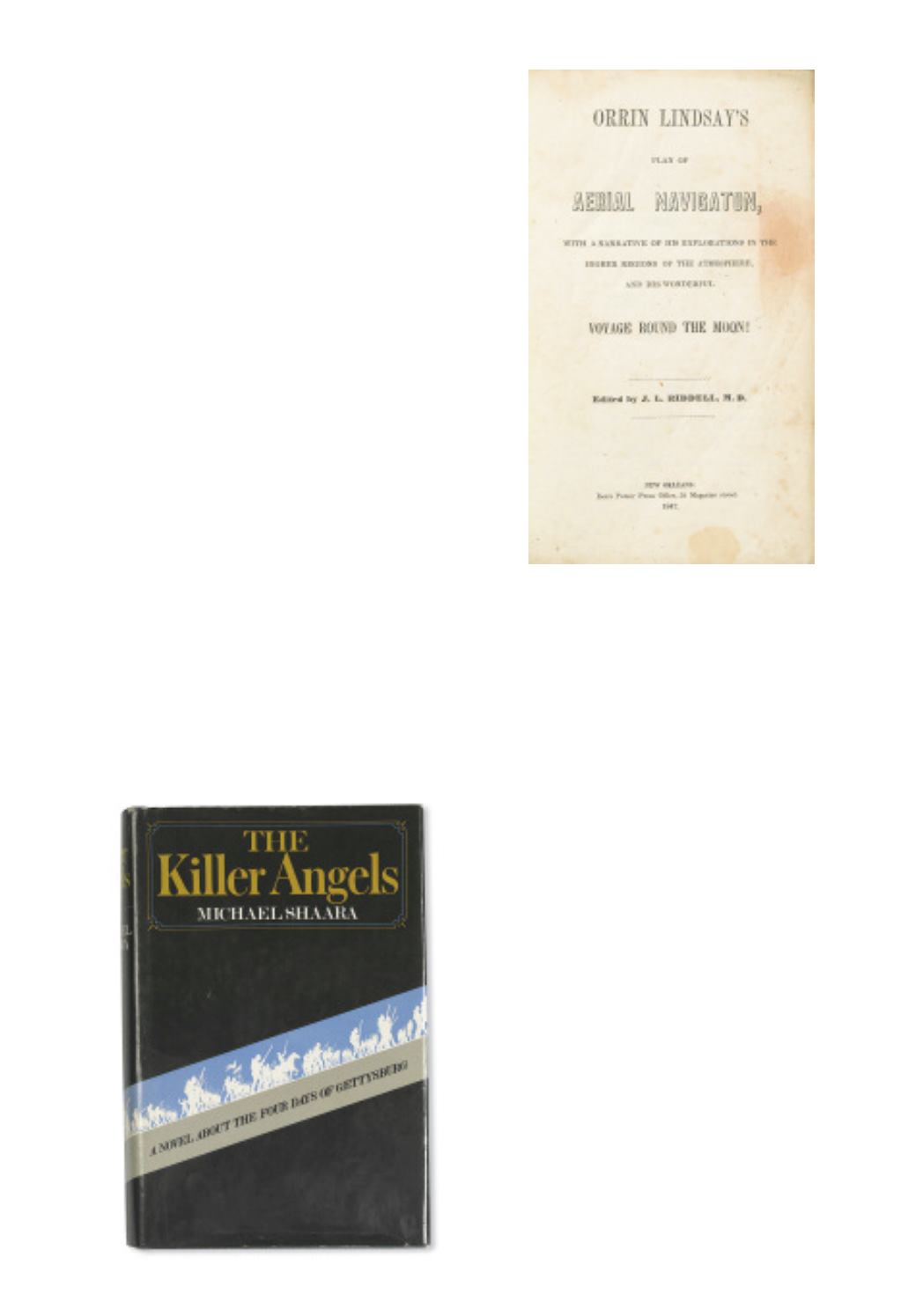
UNUSUAL PROTO SCI-FI ODDITY
256
(SCIENCE FICTION.) Riddell, John
Leonard.
Orrin Lindsay’s Plan of Aerial
Navigation, with a Narrative of his
Explorations in the Higher Regions of the
Atmosphere, and his Voyage Round the
Moon!
33 pages. 8vo, self-wrappers, scattered
soiling, few small chips and closed tears at edges,
backstrip chipped with slight loss, front wrapper
strengthened on small portion of verso; spots of
discoloration and dampstaining internally, chiefly
to margins.
New Orleans: Rea’s Power Press, 1847
[800/1,200]
FIRST EDITION OF AN OBSCURE BUT IMPORTANT
EARLY IMAGINING OF A MOON LANDING
and a gen-
uine if inchoate science-fiction work, long before the genre
was established. J.L. Riddell was a professor of Chemistry
at the University of Louisiana (later Tulane University)
when he wrote this speculative narrative. A regular on the
national lyceum lecture circuit of the time along with such
luminaries as Emerson, Thackeray and P.T. Barnum,
Riddell was also a botanist, microbiologist, an amateur
theoretical physicist, and, perhaps unsurprisingly, an inventor.
“On April 30, 1847, Riddell delivered his annual lecture to members of the New Orleans Lyceum.
In this case the subject was not exactly popular science, but a didactic, fictional description of a lunar
voyage based closely on the scientific knowledge of the day (with one fantastic assumption). This was
‘Orrin Lindsay.’ The reading, which probably took about two hours, was enthusiastically received, and
lyceum members urged Riddell to publish it” (Bleiler, Science Fiction Studies; vol. 36, pt. 2; 2009).
The fantastic assumption cited above was Riddell’s “theoretical equation of magnetism and gravita-
tion” as a means for space exploration. A fascinating document. OCLC locates several copies but we
know of no other examples appearing at auction since 1971.
257
●
SHAARA, MICHAEL.
The
Killer Angels.
8vo, publisher’s cloth,
textblock slightly skewed; dust jacket, light
edge creasing, faint dampstain to upper
rear panel mostly evident on verso.
FIRST
EDITION
of the author’s second, and best-
known novel. 1975 Pulitzer Prize winner.
New York: David McKay, (1974)
[500/750]
257


